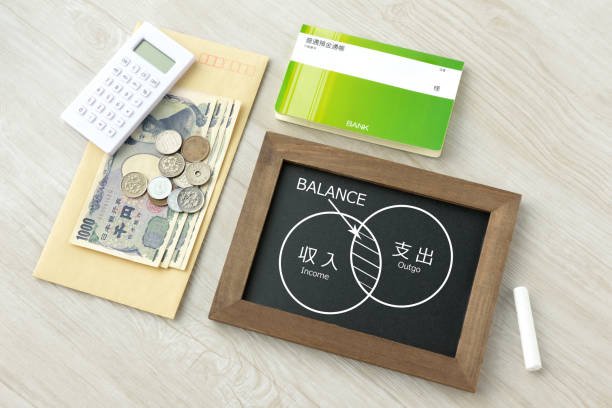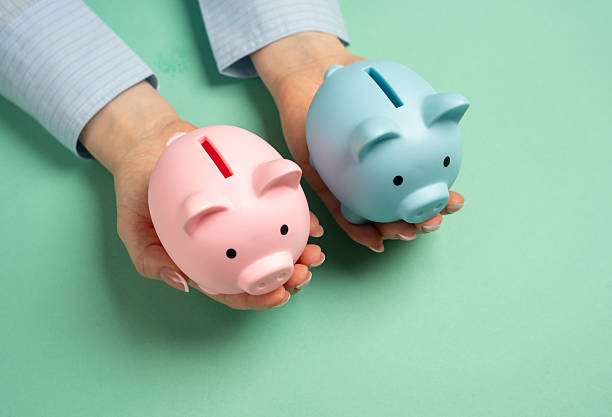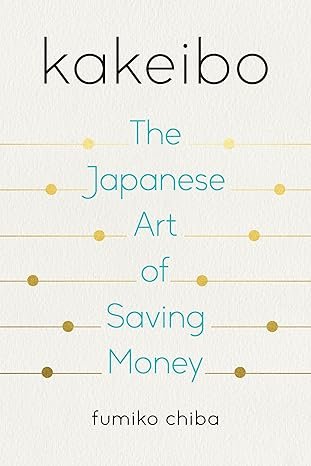Are you tired of wondering where your money goes each month? Do rising costs and the ease of digital payments make saving feel impossible? Imagine a simple, yet powerful, century-old Japanese system that could transform your financial habits. The Kakeibo budgeting method is here to help you gain control, practice mindful spending, and boost your savings in 2025. It’s not just about tracking numbers; it’s about building awareness and making intentional choices with your money. Get ready to embark on a journey towards financial clarity and a fatter savings account!
What Is the Kakeibo Budgeting Method?
At its heart, the Kakeibo budgeting method is a philosophy of mindful, manual budgeting. Forget complex spreadsheets or fancy apps for a moment; this system thrives on the simple act of writing things down. It’s all about becoming deeply aware of your income, expenses, and, most importantly, your spending patterns. This reflective approach is key to truly understanding where your money is going.
The Kakeibo (pronounced “kah-keh-boh”) was created in 1904 by Hani Motoko, Japan’s first female journalist. She designed it to empower housewives to manage household finances effectively. More than just a ledger, it became a cultural tool for thoughtful money management, encouraging people to consider their purchases before making them. This emphasis on personal reflection makes the Kakeibo budgeting method a unique and powerful tool for personal finance.

How the Kakeibo Budgeting Method Works Step by Step
Ready to dive into the Kakeibo budgeting method? It’s simpler than you might think, revolving around four key questions you ask yourself at the beginning of each month. Grab a notebook and a pen—we’re going old school!
Step 1: Calculate Monthly Income
First things first, jot down your total take-home pay for the month. This includes your salary, any freelance income, or other regular earnings. Be precise and clear about the amount you have available. This provides the foundation for your mindful spending journey.
Step 2: List Fixed Expenses
Next, list all your fixed expenses. These are the bills that usually stay the same each month, like rent or mortgage payments, loan installments, insurance premiums, and subscriptions. These are non-negotiable costs that you need to account for first. Seeing these laid out clearly helps you understand your baseline financial commitments.
Step 3: Set Realistic Savings Goals
Now for the exciting part: setting your savings goals! Decide how much you want to save this month. Be ambitious but also realistic. Whether it’s for a down payment, a vacation, or just building an emergency fund, having a clear target is crucial. The Kakeibo budgeting method encourages you to “pay yourself first.”
Step 4: Decide on Spending Money
With your income, fixed expenses, and savings goals in mind, it’s time to figure out your discretionary spending. Subtract your fixed expenses and savings goal from your total income. The remaining amount is what you have available for your variable expenses and everyday spending. This is where the power of mindful money habits truly begins.

Tracking Expenses with Kakeibo Categories
The Kakeibo budgeting method simplifies expense tracking by dividing everything into four straightforward categories. The magic here is writing everything down by hand in a journal or ledger. This tactile process forces you to acknowledge each transaction.
The four categories are:
- Needs: These are your absolute essentials for living. Think groceries, utilities, transportation (gas, public transport), and basic toiletries. For example, buying rice and lentils for home cooking is a “need.”
- Wants: This category includes things that improve your quality of life but aren’t strictly necessary. Dining out, new clothes, entertainment subscriptions, or that fancy coffee fall here. A spontaneous latte is definitely a “want.”
- Culture: This category is unique to Kakeibo and focuses on personal growth, education, and enriching experiences. It covers things like books, museum visits, concert tickets, or a new online course. A visit to an art exhibition would fit perfectly here.
- Unexpected: Life happens, and this category is for those irregular or surprise expenses. Car repairs, medical co-pays, gifts for special occasions, or a sudden home repair go here. A popped tire definitely falls into the “unexpected” bucket!
By categorizing your spending this way, you gain a clearer picture of where your money is truly going. This is a fundamental step in mastering mindful spending and developing strong money management skills.
Reflection: The Heart of the Kakeibo Budgeting Method
Simply tracking expenses isn’t enough; the true power of the Kakeibo budgeting method lies in its emphasis on monthly reflection. At the end of each month, you’ll sit down with your journal and review everything. This isn’t just about tallying numbers; it’s about asking yourself critical questions.
Did you meet your savings goal? Where did you overspend? Were there recurring “wants” that could be cut back? Analyzing your spending habits against your initial goals provides invaluable insights. This reflection allows you to adjust your plan for the next month, making more informed decisions. Sometimes, just postponing a non-essential purchase for a week or two can make a huge difference, a truly mindful strategy.
The Psychological Benefits of Kakeibo
In a world dominated by digital transactions, the act of physically writing down your expenses offers profound psychological benefits. When you manually log each purchase, you create a tangible connection to your money. This simple act forces a moment of pause and recognition that a quick swipe of a card often bypasses.
This manual process fosters a deeper awareness of your spending habits. You begin to see patterns, identify triggers for impulse purchases, and truly understand the impact of your choices. This heightened awareness is the cornerstone of mindful spending, leading to lasting behavior change and better personal finance management. It helps you recognize where you can save money without feeling deprived.
Common Challenges with Kakeibo and How to Overcome Them
While the Kakeibo budgeting method is incredibly effective, it’s not without its challenges. Like any new habit, it requires consistency and dedication. But don’t worry, there are ways to make it stick!
One common hurdle is the perception that daily tracking can be time-consuming. It’s true, it requires a few minutes each day, but consider it an investment in your financial future. Another challenge can be the difficulty in deciding between “wants” vs. “needs.” It’s a personal distinction, and what’s a “want” for one person might be a “need” for another. Be honest with yourself and refine your understanding over time. Finally, it requires discipline and habit-building.
To overcome these, try making it fun! Use a colorful Kakeibo budgeting journal that you love to open. Set daily reminders on your phone to log your expenses. Build a routine, perhaps while having your morning coffee or before bed. Remember, consistency is more important than perfection. Every little bit of effort helps you save money and improve your money management.
Who Is the Kakeibo Budgeting Method Best For?
The Kakeibo budgeting method isn’t for everyone, but it’s a perfect fit for specific types of individuals. If you appreciate the tactile nature of writing and prefer analog systems over digital ones, Kakeibo might just be your financial soulmate. It’s ideal for those who value mindfulness and reflection in all aspects of their lives, including their personal finance.
This method truly shines for anyone committed to daily journaling and cultivating a deep awareness of their money. If you’re looking to slow down your financial decision-making and gain a profound understanding of where your income goes, then the Kakeibo budgeting method is definitely worth exploring to help you save money.
Kakeibo vs. Other Budgeting Methods
When we talk about budgeting, many popular methods come to mind, like the 50/20/30 rule or the plethora of digital budgeting apps available. While these methods have their merits, the Kakeibo budgeting method stands out for its unique approach to mindful spending.
The 50/20/30 rule dictates that 50% of your income goes to needs, 30% to wants, and 20% to savings. Digital apps, on the other hand, automate tracking and provide quick visual summaries. Kakeibo, however, doesn’t rely on fixed ratios or instant gratification. Instead, it focuses on the process of conscious decision-making and reflection. It encourages you to ask why you’re spending, not just how much. This deeper engagement often leads to more sustainable changes in money management.
Kakeibo in 2025: Modern Adaptations
Even a century-old method can thrive in 2025! With rising inflation, the prevalence of digital payments, and our increasingly busy lives, adapting the Kakeibo budgeting method to modern realities is key. While the core philosophy emphasizes manual journaling, a hybrid approach can be incredibly effective.
You can still use your physical Kakeibo budgeting journal for daily tracking and monthly reflection, which is crucial for mindful spending. However, supplement it with digital tools for convenience. Use banking apps to quickly categorize transactions at the end of the day or to check your account balance. Consider a simple spreadsheet to track larger, irregular expenses. The goal isn’t to replace the manual process but to make it more manageable and integrated into your current financial landscape. This blend of tradition and modern finance tools can truly help you save money.
Real-Life Examples of Kakeibo in Action
Let’s look at how the Kakeibo budgeting method can play out in real life. Take Sarah, a marketing professional. She started her Kakeibo journal determined to save for a down payment. By faithfully tracking her “wants” in the Culture category, she realized she was spending over $100 a month on impulse book purchases she rarely read. By cutting back on these and making more mindful choices, she saved an extra $300 a month, quickly accelerating her savings goal.

Then there’s Mark, who initially struggled with consistency. He gave up after two weeks because he found daily tracking tedious. This highlights a common challenge: the need for discipline. He later revisited Kakeibo, setting a reminder for 5 minutes each evening to log his expenses. This small change helped him build the habit, eventually revealing that his frequent takeout orders were derailing his efforts to save money. These examples show the power of awareness in personal finance.
Tools to Support Your Kakeibo Journey
To truly get started and stay motivated, having the right tools can make a big difference. While any notebook will do, a dedicated Kakeibo budgeting journal can provide structure and keep you consistent. These journals often come with pre-designed sections for income, fixed expenses, categories, and monthly reflection pages, making the process smoother and more engaging. Finding one you love to use can turn a chore into an enjoyable routine, making your money management journey easier.

Final Thoughts on Mastering Mindful Spending with Kakeibo
The Kakeibo budgeting method is more than just a way to track your money; it’s a powerful tool for cultivating mindful spending habits, increasing your savings, and ultimately achieving greater financial peace. By embracing this century-old Japanese practice, you’ll gain unparalleled awareness of your financial choices and build a stronger relationship with your money.
Why not give it a try for just one month? Commit to daily tracking and honest monthly reflection. You might be surprised by how small, mindful choices can transform your savings in 2025. Start your Kakeibo journal today and unlock a new level of financial understanding and control. And if you’re ready to take the next step, don’t miss our guide: Get Your Finances Back on Track — A 30-Day Plan for September.
